Table of contents
Is dill a spice? Fresh dill ( Anethum graveolens) is one of the better-known organic spices and should not be missing from any kitchen. The raw herb tastes particularly good with cucumbers; the seeds are used less frequently.
Use in the kitchen
This versatile herb has a sweet aroma and is slightly reminiscent of anise, parsley and caraway. The healthy dill herb tastes much sweeter, especially when fresh, than the seeds. When dried or cooked, the green parts of the plant lose their aroma.
With its characteristic taste, raw or dried herb refines salads, vegan spiced butter, vegan cheese, spreads, hot and cold sauces or dips, cooked potatoes, stews, raw food creations and especially cucumbers (hence the colloquial name cucumber herb).
The herb, stems, leaves and flower umbels are popular as a seasoning for herbal essences, gherkins (colloquially known as cucumber caraway) and other pickled vegetables (colloquially known as caper herb).
For fresh raw food, you can grow sprouts from the seeds in trays within three to four weeks and eat the young dill raw.
Vegan recipe for Georgian Tqemali sauce (Tkemali)
Ingredients (for 2 people): 250 g ripe or unripe cherry plums (alternatively: sour plums, alutscha, cornelian cherries, sour cherries, mirabelles or tart plums), 10 g fresh organic dill, 5 g each of fresh mint leaves, fresh parsley, fresh coriander leaves, 2 dried dates, 1 clove of garlic, a few dashes of lemon juice, paprika powder and salt.
Preparation: Pit the raw cherry plums, halve them and cook in 100 ml of water until soft (approx. 5 minutes). Put the plums, approx. 50 ml of cooking liquid, fresh herbs, pitted and chopped dates, garlic and lemon juice in a tall blender and puree with a hand blender. Season the fruity, spicy sauce with paprika and salt and serve cold with kidney beans, potatoes or hearty dishes.
Recipe for fresh dill seed tea:
Squeeze 1 teaspoon of fresh seeds and pour a cup of hot drinking water over them. Cover and leave to steep for 5 minutes, then remove the dill seeds from the liquid. Drink a cup of the tea several times a day. 1
A proven tea mixture to promote milk supply (breastfeeding tea) contains 15 g of dill seeds, 30 g of nettle leaves, 30 g of fennel seeds, 15 g of aniseed and 10 g of caraway seeds. 1
Vegan recipes with fresh dill can be found under the note: " Recipes that have the most of this ingredient ".
| Not only vegans or vegetarians should read this: Vegans often eat unhealthily. Avoidable nutritional errors. |
Purchasing - Storage
You can buy the fresh herb in supermarkets such as Coop, Migros, Denner, Volg, Spar, Aldi, Lidl, Rewe, Edeka, Hofer or Billa and in organic supermarkets such as Denn's Biomarkt or Alnatura. Dill is usually stored in small packaged quantities in the refrigerated section. Dill can be obtained raw and in controlled organic quality in organic shops, health food stores, at weekly markets, directly from the farmer or via a subscription box (seasonal box, green box) - sometimes as fresh bunches or as a potted herb plant. In Switzerland, fresh dill is in season from the beginning of May to the end of September. Dried dill spice, on the other hand, can be found on the spice shelf.
How much does 1 bunch of dill weigh in grams? A bunch of dill usually weighs 25 g.
The availability of dill in the (organic) supermarkets mentioned varies depending on the size of the store, catchment area, etc. Our recorded food prices for the DA-CH countries can be found above under the ingredient image - and by clicking on them you can see their development at various suppliers.
Found in the wild
The herb (colloquially known as Däll / Dillich) that is grown in gardens is rarely and sporadically found growing wild in sunny, dry, warm places. 2,3,4,20 You will find distinguishing features to differentiate it from other edible, poisonous and highly poisonous umbelliferous plants below under "Risks of confusion".
Storage tips
Fresh dill can be stored in a plastic bag or storage container in the refrigerator for about a week. The plant should not be damp to avoid rot and mold. If necessary, excess moisture can be removed using a salad spinner.
Since the fine leaves quickly lose their aroma when dried, freezing is the more flavor-preserving option. To do this, chop the raw plant parts, pack them in airtight bags or containers and place them in the freezer.
Ingredients - Nutritional values - Calories
100 g of fresh dill has a calorie content of 43 kcal. The main nutrients are represented as follows: 1.1 g fats, 7 g carbohydrates and 3.5 g proteins. 6
Does dill contain vitamins? With 85 mg/100g, the raw, freshly harvested herb is rich in vitamin C. It is worth noting that 10 g can cover around 10% of your daily requirement. Since you rarely consume large amounts of it on a regular basis, you should also use other sources of ascorbic acid. 6
Other spices or wild plants that contain significantly more vitamin C are raw garlic mustard (261 mg/100g), fresh ground elder (140 mg/100g), raw parsley (133 mg/100g), fenugreek (126 mg/100g), small sorrel (117 mg/100g) or narrow-leaved willowherb (99 mg/100g). 6
The ingredients of the seeds (fruits) that determine their effectiveness include up to 5% carvone-rich essential oil and 10-20% fatty oil. 8
The complete ingredients of fresh dill, the coverage of the daily requirement and comparison values with other ingredients can be found in our nutrient tables. In the article Nutrients explained you will get a detailed insight into the topic.
Health effects
How healthy is dill? The plant's essential oil has been shown to have antimicrobial, antifungal and antioxidant effects. 36
The seeds inhibit the growth and proliferation of bacteria 15 and have an antispasmodic (spasmolytic) effect. The essential oil of the seeds exerts the latter effect directly on the smooth muscles of the gastrointestinal tract (colloquially known as flatulence). At the same time, the mucous substances in the seeds protect the stomach lining. These effects are much weaker than those of caraway preparations, but can be an alternative if you have an aversion to caraway. 8,9
A randomized controlled trial (2020) evaluated the elastogenic effect of a blackberry-dill extract combination to counteract skin aging. Clinically, the treatment demonstrated synergistic pro-elasticity activity compared to the individual plants and placebo. 17 An earlier randomized controlled trial from 2011 also showed significant improvements in skin elasticity in vitro and in vivo. 18
In a randomized controlled trial involving 60 women with microbiologically confirmed vulvovaginal candidiasis, scientists investigated the effect of a vaginal suppository formulation containing Anethum graveolens. The control group was treated with clotrimazole vaginal tablets. According to the results, dill vaginal suppositories (2 g, with 2% (w/w) dry extract) were as effective as clotrimazole vaginal tablets in reducing clinical and microbiological symptoms. Studies with larger sample sizes are needed to confirm the current results. 16
Secondary plant substances
Many of the health effects of dill can be attributed to the secondary plant substances it contains. Our article on secondary plant substances provides an overview of the classification of the substance groups, their occurrence in foods and possible effects on humans.
Dill contains the following secondary plant substances:
- Isoprenoids: Terpenes: Triterpenes (limonene, pinene, carvone), monoterpenes (phellandrene); terpenoids (linalool); saponins; steroids; carotenoids 5,10,26,27
- Alkaloids 5.26
- Polyphenols: Phenolic acids: hydroxycinnamic acids (caffeic acid, chlorogenic acid, rosmarinic acid, ferulic acid, p-coumaric acid, o-coumaric acid, trans-cinnamic acid), hydroxybenzoic acids (vanillic acid, protocatechuic acid, syringic acid); flavonoids: flavonols (rutin, quercetin, kaempferol, isorhamnetin), anthocyanins; tannins; xanthones; coumarins (bergapten, umbelliferone) 5,7,8,26,27
However, it should be noted that the composition of secondary plant substances in dill can vary depending on the variety, time of harvest and growing conditions. Therefore, quantities are only of limited use and should only be understood roughly.
The results of a systematic review (2021) with 171 intervention cases show that supplementation with Anethum graveolens resulted in a significant reduction in total cholesterol. A potential explanation for why dill lowers blood lipid levels could be the presence of the terpene D-limonene. D-limonene has been shown to be effective in lowering cholesterol levels. The flavonoids and carotenoids it contains could also potentially contribute to this mechanism. Further controlled clinical studies are needed to draw more precise and confirmatory conclusions. 10 A meta-analysis from the same year concluded that Anethum graveolens could have beneficial effects on insulin resistance and serum LDL, which is attributed to the bioactive substances in dill. Again, further research is needed to confirm the results. 11
The lipid-lowering properties of dill may also play a role in alleviating symptoms of type 2 diabetes. In an eight-week, double-blind, controlled study, 42 patients with type 2 diabetes were given either dill powder or a placebo. The addition of dill powder resulted in a significant reduction in "blood insulin," insulin resistance symptoms, LDL and total cholesterol, while HDL cholesterol and antioxidant capacity increased. These effects were attributed to the bioactive compounds in dill, as they were not observed in the control group. Therefore, supplementation with dill powder may be effective in controlling glycemic, lipid and oxidative stress symptoms in type 2 diabetes. 12
Another systematic review (2020) evaluated the effect of Anethum graveolens seeds on the duration of labor. Certain phases of labor were significantly reduced. It is possible that the consumption of dill seeds promotes uterine contractions due to the isoprenoids and polyphenols present, thus promoting a faster birth process. The use of the plant is recommended for low-risk pregnant women. 13,14 According to a randomized controlled trial (2019), cooked seeds can reduce anxiety during labor. 15
Studies have also confirmed the anti-inflammatory and antioxidant properties of the isoprenoids and polyphenols in dill. In animal studies, both dill herb and dill herb extracts showed efficacy against chronic inflammation, 28 inflammation of the gastric mucosa 29 and the esophagus 30 as well as protective properties in liver diseases. 31,32 Likewise, the phytochemicals in dill can offer protection against parasites such as Giardia, 33 various bacteria and fungal diseases. 26,34,35
Dangers - Intolerances - Side effects
Is too much dill unhealthy? According to current knowledge, its use as a spice does not have any harmful effects on the health of consumers. 8 Likewise, no contraindications, side effects or interactions are known. 9 In general, ingredients from plants in the Apiaceae family can cause contact or photodermatitis. 8 The ingredient dill, dried, provides information about allergic reactions.
Danger of confusion
Among the Umbelliferae there are numerous edible as well as poisonous and even highly poisonous plant species. For laypeople, collecting them in the wild can have fatal consequences. It is therefore advisable to buy these plants or herbs as potted plants and to label them and grow them in the vegetable patch.
Harmless possibilities of confusing dill with edible, wild or cultivated plants include ground elder, chervil, cow parsley, wild carrot, cow parsley, sweet cicely, fennel, coriander, caraway, parsnip, lovage or celery.
Danger exists with these poisonous and highly poisonous lookalikes: Greater and lesser masterwort, hemlock, fool's parsley, giant hogweed, broad-leaved merk or goiter. You can find distinguishing features under the subtitles of the same name in the ingredient descriptions of cow parsley and ground elder.
Dill usually forms a single, upright, tubular shoot 60-90, sometimes up to 120 cm high, which is easy to pull out. The one- to two-year-old plant grows more slenderly than fennel and its green is rather dull to slightly grayish. The leaves, which are up to 35 cm long, are 2- to 3-fold pinnate and thread-like. In summer, tiny yellow umbels appear in about 30-50 umbel rays. The seeds are egg-shaped, flattened and aromatic. The plant never forms a bulb at the base. 3,4,20,36 When crushed, the plant parts give off a pleasant and specific scent. 3
Use as a recognized medicinal plant
HMPC ( Committee on Herbal Medicinal Products) or ESCOP ( European Scientific Cooperative on Phytotherapy), in contrast to Commission E, have not (yet) produced a monograph for dill seed or dill herb.
According to Commission E, indications for the medicinal use of the seeds are dyspeptic complaints (upper abdominal complaints). Overall, however, they have a moderate phytotherapeutic significance. Dill is used almost exclusively as a food or spice. 9,27 Unlike the seeds , Commission E considers the effectiveness of the herb for dyspeptic complaints to be unproven. 8
Medicines containing Anethum graveolens extracts play hardly any role in Western medicine. The use of the seeds is now scientifically recognized due to their antispasmodic effect (for dyspeptic complaints). 8
The average daily dose is 3 g of seeds or 0.1-0.3 g of essential oil. Whole seeds are used freshly crushed for infusions or other preparations for ingestion. As a spice, the seeds are only suitable as a preventative measure. 9
Folk medicine - naturopathy
In a systematic review, scientists searched databases for Iranian medicinal plants that are traditionally used as effective alternatives to antibiotics for vaginal infections. The antimicrobial Anethum graveolens is used, among others. 19
In Europe, traditional folk medicine uses the herb as an antispasmodic, carminative, digestive and diuretic herbal remedy. 7
Ecological footprint - animal welfare
According to CONCITO (figures from 2024), dill has a CO 2 footprint of 0.4 kg CO 2 eq/kg (2021: 0.37) in Denmark. This is similar to the ecological footprint of other herbs such as parsley 0.4 kg CO 2 eq/kg (2021: 0.37 kg) or chives 0.37 kg CO 2 eq/kg (2021: 0.32). 22 We do not have exact figures on the amount of water needed to produce 1 kg of dill.
For detailed explanations of various sustainability indicators (such as ecological footprint, CO2 footprint, water footprint), see our article: What does the ecological footprint mean?
In Turkey, a study was carried out in 2021 on pesticide residues in fruit and vegetables from the market. Among the most heavily contaminated foods examined was dill, which in more than 80% of cases even contained pesticide residues above the permitted limit. 21 A similar study in Egypt came to consistent results, with the levels of certain pesticides also exceeding the maximum permitted amount. 23 When shopping, it is therefore ideal to buy organically grown goods, as no synthetic pesticides or fertilizers are used here.
Pesticides not only have a detrimental effect on human health, they also have a negative impact on the ecosystem and on important pollinators. These are also relevant for dill, which blooms from June to August (max. October). The nectar and pollen values are medium (nectar and pollen value scale: none, low, medium, high, very high). Small hymenoptera such as hoverflies, honey bees and beetles have a summer and early autumn nectar flow. 3 The nectar flow includes the entire range of nectar, honeydew and pollen available to insects. The flowers attract numerous beneficial insects that fight aphids. 4
Worldwide occurrence - cultivation
The original origin of the plant is located in Southwest Asia. 2,4 It has a long history of cultivation since antiquity 14 and is considered, depending on the interpretation, to be the only species of the genus Anethum (see Dill, dried). The two varieties/subspecies var. graveolens (European dill) and sowa (Indian dill) are particularly well known. The former is found in Europe, North Africa, North and South America; the latter is cultivated mainly in Japan, India, China and Java. 8 The spice plant appeared in Switzerland before the 15th century. 20
Cultivation - Harvest
The plant has rather high demands on the soil, which should be well worked, fine-crumbly, 1 neutral to slightly acidic and in a sunny location. If the soil is too dry and poor and the seeds are too dense, the plants tend to bolt. Dill and cabbage are good neighbours in the vegetable patch, but it does not get along so well with carrots. If it is too close to fennel, hybrids can develop. 4
From early spring to mid-summer, you can start sowing at intervals of 3-4 weeks (sowing distances guarantee a continuous harvest). Later, the young plants are thinned out to 20 cm. The fronds are cut from spring to summer, 4 seeds are harvested before they are fully ripe, otherwise they easily fall out of the umbels. 1
Successful commercial outdoor cultivation requires warm to hot summers with high levels of sunshine and rich, well-drained soils. 7 Dill cultivation is widespread in many countries, including southern Germany. 2
The cultivation of bunched and potted plants for the fresh market (conventional or organic) takes place in greenhouses and outdoors. For industrial processing, the spice plant is grown in a highly mechanized manner and on a large scale. Medicinal plants are also grown on a large scale and outdoors.
Further information
Dill ( Anethum graveolens) belongs, as mentioned, to the family of the Umbelliferae (Apiaceae). Depending on the point of view, a distinction is not only made between European and Indian dill, but also between the original wild form of field dill ( Anethum graveolens var. graveolens) and the garden dill or leaf dill as a cultivated form ( Anethum graveolens var. hortorum) - and the Anatolian dill. However, we were unable to determine definitively to what extent this distinction is scientifically relevant.
Alternative names
Alternative names are true dill, dillich, däll, dill herb, dill fennel, cucumber caraway, cucumber herb, cucumber herb, cucumber caraway, caper herb, caper herb or flatulence herb.
In southern Germany, 'der Dill' and 'die Dille' are known without any difference in meaning.
In English, names such as dill, dillseed (fruit), dillweed (herb) and corn caraway are in circulation.
Other uses
The essential seed oil (Anethi herba aetheroleum) is used as a flavoring additive in cosmetics, perfumes, medicines, cleaning products, soaps and in the food industry. 4,8
Bibliography - 34 Sources (Link to the evidence)
| 1. | Niederegger O, Mayr C. Heilpflanzen der Alpen. Gesundheit aus der Natur von A bis Z. Innsbruck: Tyrolia-Verlag; 2006. |
| 2. | Pahlow M. Das grosse Buch der Heilpflanzen. Gesund durch die Heilkräfte der Natur. Hamburg: Nikol Verlagsgesellschaft mbH & Co. KG; 8. Auflage. 2019. |
| 3. | Kremer BP. Mein Garten – Ein Bienenparadies. Bern: Haupt Verlag; 2. Auflage. 2018. |
| 4. | Bown D. Kräuter. Die grosse Enzyklopädie. Anbau und Verwendung. München: Dorling Kindersley; 2. Auflage. 2015. |
| 5. | Abbasi Oshaghi E, Khodadadi I et al. Lipid lowering effects of hydroalcoholic extract of Anethum graveolens L. and dill tablet in high cholesterol fed hamsters. Cholesterol. 2015;2015:ID 958560. |
| 6. | USDA (United States Department of Agriculture). Nährstofftabellen. |
| 7. | Memariani Z, Gorji N, Moeini R, Farzaei MH. Traditional uses. In: Nabavi SM, Suntar I, Khan H (Ed.) Phytonutrients in Food. From Traditional to Rational Usage. 2020;23–66. |
| 8. | Sebastian S, Melzig M. Anethum graveolens L. Z Phytother. 2013;34(05):249-254. |
| 9. | Schilcher H, Kammerer S, Wegener T. Leitfaden Phytotherapie. München: Elsevier GmbH; 3. Auflage. 2007. |
| 10. | Sadeghi M, Kabiri S, Amerizadeh A, et al. Anethum graveolens l. (dill) Effect on human lipid profile: an updated systematic review. Curr Probl Cardiol. 2022;47(11):101072. |
| 11. | Mousavi SM, Beatriz Pizarro A et al. The effects of Anethum graveolens (dill) supplementation on lipid profile and glycemic control: a systematic review and meta-analysis of randomized controlled trials. Crit Rev Food Sci Nutr. 2022;62(21):5705-5716. |
| 12. | Haidari F, Zakerkish M et al. The effects of Anethum graveolens (dill) powder supplementation on clinical and metabolic status in patients with type 2 diabetes. Trials. 2020;21(1):483. |
| 13. | Talebi F, Malchi F et al. Effect of dill (Anethum graveolens linn) seed on the duration of labor: A systematic review. Complement Ther Clin Pract. 2020;41:101251. |
| 14. | Hekmatzadeh SF, Bazarganipour F et al. A randomized clinical trial of the efficacy of applying a simple protocol of boiled Anethum graveolens seeds on pain intensity and duration of labor stages. Complement Ther Med. 2014;22(6):970-976. |
| 15. | Hekmatzadeh SF, Bazarganipour F et al. Effects of boiled dill seed on anxiety during labor: a randomized clinical trial. Chin J Integr Med. 2020;26(2):100-105. |
| 16. | Saghafi N, Karjalian M et al. The effect of a vaginal suppository formulation of dill (Anethum graveolens) in comparison to clotrimazole vaginal tablet on the treatment of vulvovaginal candidiasis. J Obstet Gynaecol. 2018;38(7):985-988. |
| 17. | Meza D, Li WH et al. A blackberry-dill extract combination synergistically increases skin elasticity. Int J Cosmet Sci. 2020;42(5):444-451. |
| 18. | Sohm B, Cenizo V et al. Evaluation of the efficacy of a dill extract in vitro and in vivo. Int J Cosmet Sci. 2011;33(2):157-163. |
| 19. | Rashidipour M, Shakib P et al. Native iranian medicinal plants with anti-vaginal infection properties: a systematic review. Infect Disord Drug Targets. 2022;22(6):41-47. |
| 20. | Infoflora.ch Anethum graveolens L. Dill. |
| 21. | Toptanci I, Kiralan M, Ramadan MF. Levels of pesticide residues in fruits and vegetables in the Turkish domestic markets. Environmental Science and Pollution Research. 2021;39451-39457. |
| 22. | CONCITO. The Big Climate Database, version 1. 2024. |
| 23. | Abou-Arab AAK, Abou MAD. Pesticide residues in some Egyptian spices and medicinal plants as affected by processing. Food Chemistry. 2001;72(4):439-451. |
| 26. | Chahal KK, Monika Kumar A et al. Chemistry and biological activities of Anethum graveolens L. (Dill) essential oil: A review. J Pharmacogn Phytochem. 2017;6(2):295–306. |
| 27. | Bäumler S. Heilpflanzenpraxis Heute. Arzneipflanzenporträts. 3. Auflage. München: Elsevier. 2021. |
| 28. | Naseri M, Mojab F et al. The study of anti-inflammatory activity of oil-based dill (Anethum graveolens L.) extract used topically in formalin-induced inflammation male rat paw. Iran J Pharm Res. 2012;11(4):1169–1174. |
| 29. | Hosseinzadeh H, Karimi G, Ameri M. Effects of Anethum graveolens L. seed extracts on experimental gastric irritation models in mice. BMC Pharmacol. 2002;2:21. |
| 30. | Nam HH, Nan L, Choo BK. Anti-inflammation and protective effects of Anethum graveolens L. (Dill seeds) on esophageal mucosa damages in reflux esophagitis-induced rats. Foods. 2021;10(10):2500. |
| 31. | Abbasi E, Goodarzi MT et al. Favorable effects of Anethum graveolens on liver oxidative stress and cholesterol 7 alpha-hydroxylase levels in non-alcoholic fatty liver disease (Nafld) rat models. Metabol Open. 2021;12:100140. |
| 32. | Oshaghi EA, Khodadadi I et al. Effect of dill tablet (Anethum graveolens L) on antioxidant status and biochemical factors on carbon tetrachloride-induced liver damage on rat. Int J Appl Basic Med Res. 2016;6(2):111–114. |
| 33. | Sahib AS, Mohammed IH, Sloo SA. Antigiardial effect of Anethum graveolens aqueous extract in children. J Intercult Ethnopharmacol. 2014;3(3):109–112. |
| 34. | Zeng H, Tian J et al. In vitro and in vivo activities of essential oil from the seed of Anethum graveolens L. against Candida spp. Evid Based Complement Alternat Med. 2011;2011:659704. |
| 35. | Tian J, Ban X et al. The mechanism of antifungal action of essential oil from dill (Anethum graveolens L.) on Aspergillus flavus. PLoS One. 2012;7(1):e30147. |
| 36. | Najaran ZT, Hassanzadeh MK et al. Dill (Anethum graveolens L.) Oils. In: Preedy VR (Ed.) Essential Oils in Food Preservation, Flavor and Safety. 2016:405–412. |

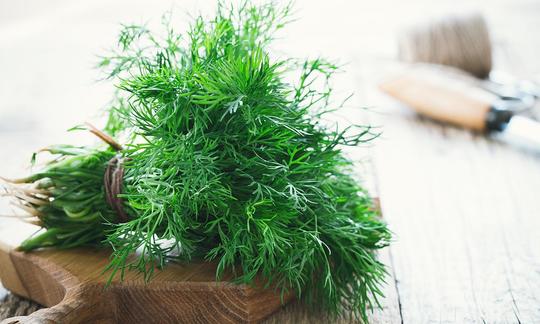

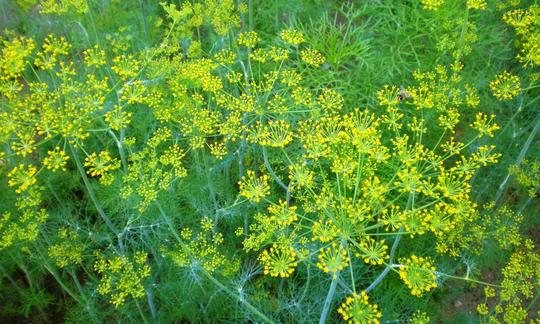

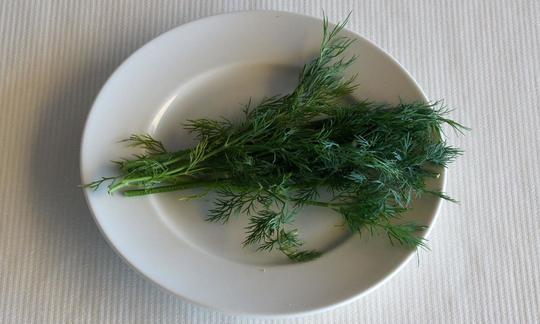

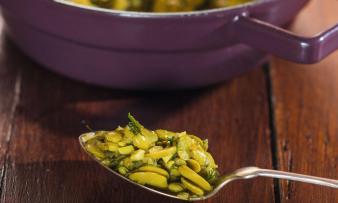
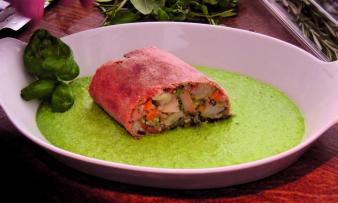
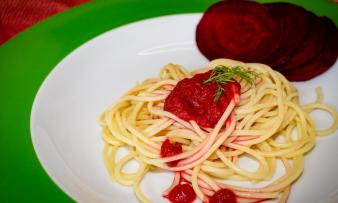





Comments